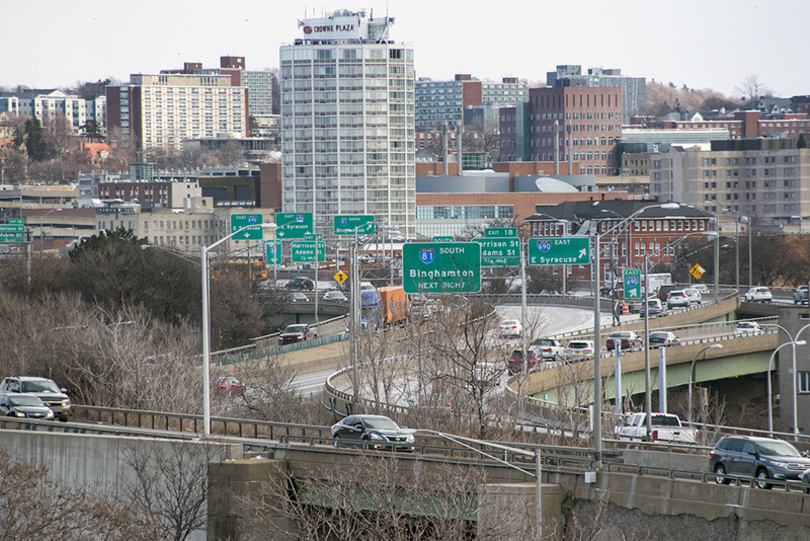Syracuse University’s help is key in addressing city poverty

It is Syracuse University’s duty to get involved in the community and help its organizations be as successful as possible. Wasim Ahmad | Staff Photographer
UPDATED: Friday, Jan. 18, 2018 at 12:46 p.m.
The Good Life Youth Foundation, located on South Salina Street in Syracuse, works to improve the lives of young people living in poverty through personal career mentoring.
Foundations such as these need the support of universities and the community members that attend them.
In Syracuse, youth poverty is a big problem. The Good Life Youth Foundation wants to reduce rates of incarceration, violence and unemployment — effects of poverty.
The Good Life Youth Foundation has proven that entrepreneurship and business can be a factor in changing the course of youth poverty and unemployment in Syracuse, one of the most impoverished cities in the United States.

Susie Teuscher | Digital Design Editor
The members of the organization get real world experience by running Good Life Youth Foundation entrepreneur ventures like GL Imprinting, Good Lawn Care and Good Eats. A portion of the profits from these businesses is then distributed to the kids, while the remaining funds are reinvested in the foundation.
The real life skills these kids learn through the foundation also motivate them in the classroom.
“Entrepreneurship connects their ability to make money with the education that they are receiving in school,” said Hasan Stephens, founder and CEO of Good Life Youth Foundation.
It’s Syracuse University’s duty to get involved in the community and help organizations to be as successful as possible.
In October 2017, SU released an economic impact report that stated that, in 2016, SU made $1.1 billion in “total impacts” in the central New York region — which is defined as Cayuga, Cortland, Madison, Onondaga and Oswego counties.
SU’s investment in the central New York region totaled about $50 million in 2016, according to the report on community investments. The report doesn’t specify what each of SU’s investments are, but it noted about $25 million went toward “financial investments” and another $24 million went toward “financial investments with engagement.”
Of the investments that fall under “financial investments,” scholarships for students from underrepresented populations make up $20.7 million.

Susie Teuscher | Digital Design Editor
In Winnipeg — a Canadian city with similar poverty rates to Syracuse — the community has benefitted from the local university’s engagement.
Jino Distasio, director of the Institute of Urban Studies and vice president of research and innovation at the University of Winnipeg said, “part of our mandate since the late 1800s has been to work and support positive growth in our community.”
But, communities can be negatively impacted when they’re not prioritized by universities. Davarian Baldwin, a professor at Trinity College, gave examples of what can happen when the needs of the community go largely ignored by universities.
“Individual skill training is only successful to the degree that the university is invested in its surrounding community that can actually support and sustain individuals with entrepreneurial training,” Baldwin said in an email.
Jack Ramza is a freshman Whitman-Newhouse major. His column runs biweekly. He can be reached at jjramza@syr.edu.
CLARIFICATION: An assessment of Syracuse University’s regional economic impact in central New York has been updated.





